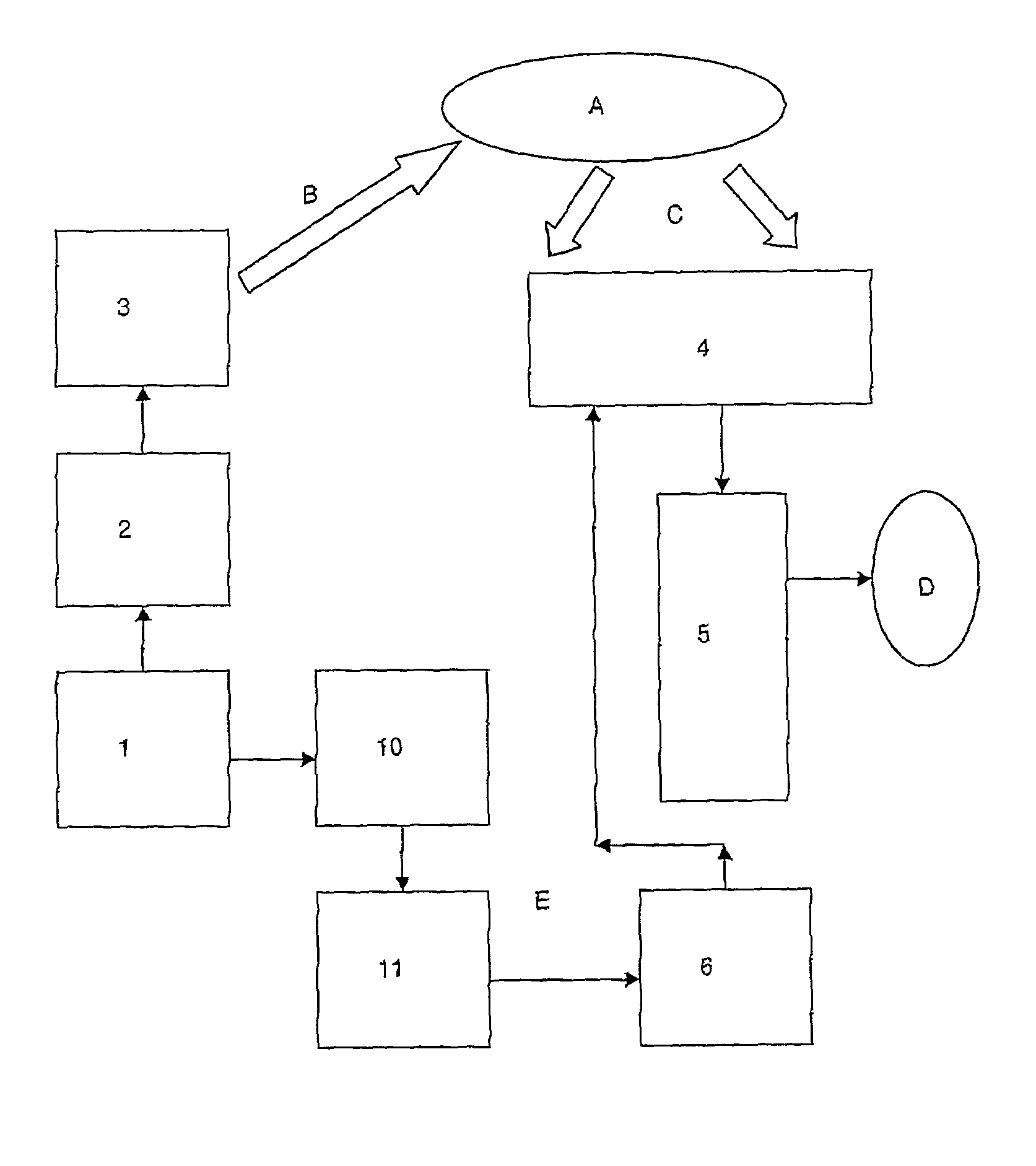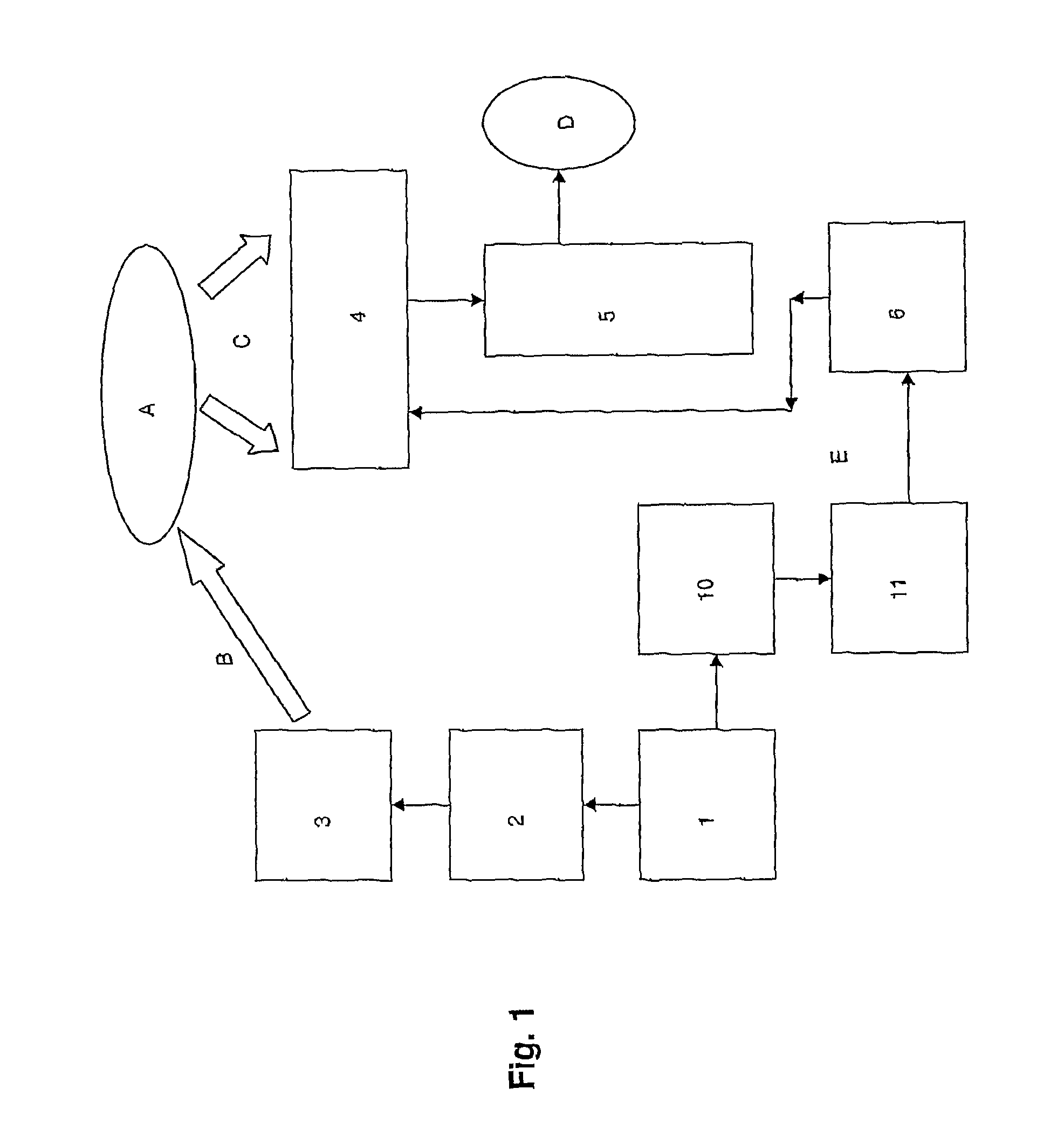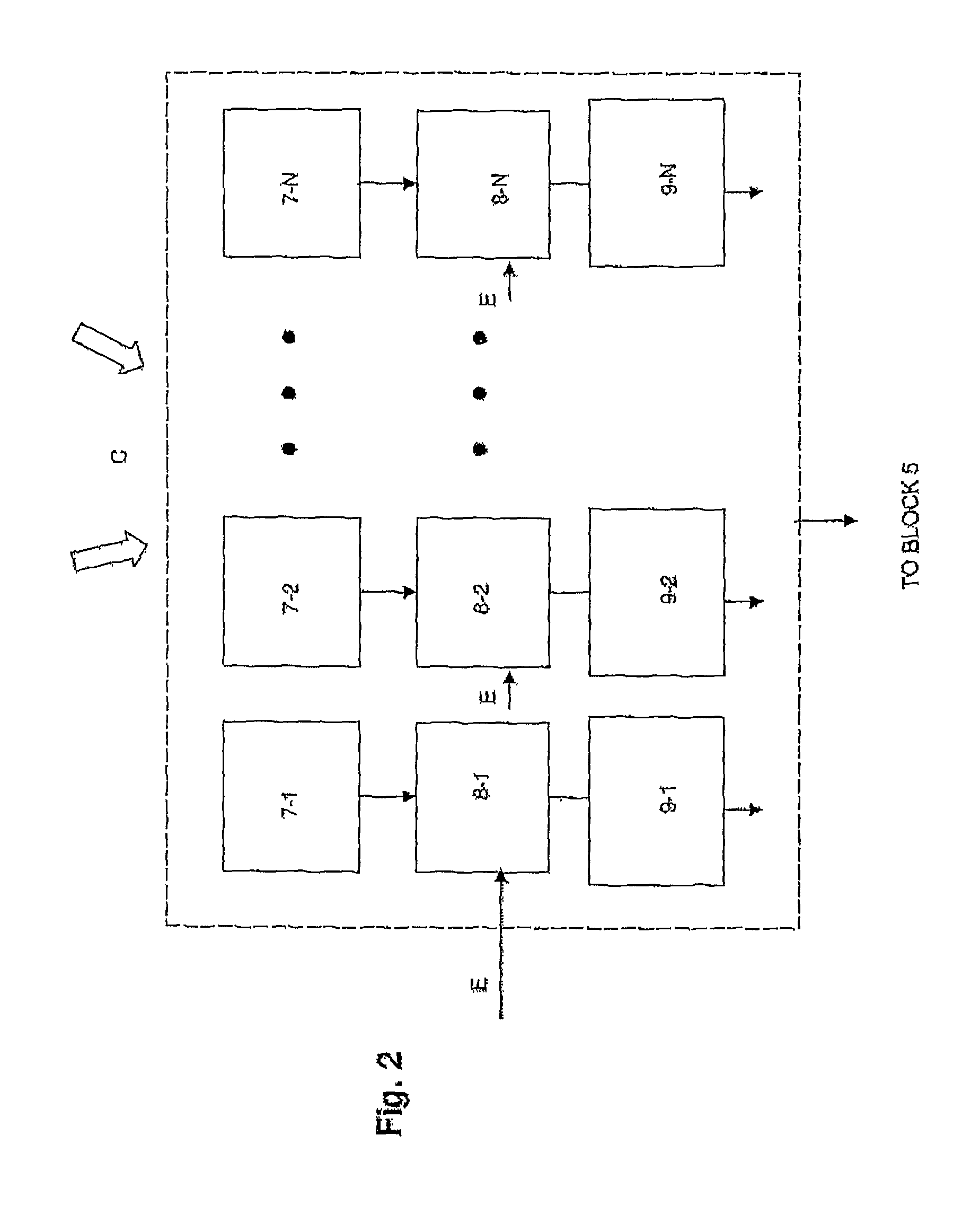Locating system based on noisy type waveforms
a technology of noisy type and positioning system, applied in the direction of using reradiation, radio wave reradiation/reflection, measurement device, etc., can solve the problems of limited power and narrow bandwidth of signals emitted by such transmitters with regard to location function, passive radars with illuminators of opportunity, and little or no useful in many applications. , to achieve the effect of reducing the average radiated power of the system, limiting the extent of any possible interference, and reducing
- Summary
- Abstract
- Description
- Claims
- Application Information
AI Technical Summary
Benefits of technology
Problems solved by technology
Method used
Image
Examples
first embodiment
[0062]With reference to the described techniques and principles, it is the object of the present invention an integrated system (see FIG. 1) for locating fixed or moving objects A which are illuminated by a noisy waveform B, i.e. random and not predictable by an external observer, which, in the invention, is an interference (jammer) intended to either limit or prevent the operation of radars located aboard said objects.
[0063]Said waveform is emitted by a high power, broadband generator (in the aforesaid embodiment, such a generator is a radar jammer) in turn comprising a synthesizer 1, a power amplifier 2 and a transmitting antenna 3, preferably of high gain in the direction of the object, which is obtained by mechanically or electronically pointing the antenna beam towards the object itself.
[0064]The electromagnetic echo C, caused by the interaction of the waveform with the structure of the object and with its infrastructures, including the onboard radar antenna if present, is dete...
second embodiment
[0069]In the system of the invention, it is provided the use of pseudo-random waveforms, and the transmission of the reference signal E to the passive subsystem 4 is replaced by a simply reading of the next waveform to be transmitted by an appropriate storage element or device.
[0070]In this second embodiment, instead of by a radar jammer as shown in the first embodiment, the waveform is transmitted by a dedicated functional block, according to a diagram which provides for the replacement of blocks 6, 10 and 11 in FIG. 1 (transmitter 10, antenna 11 and antenna 6) with a direct connection of block 1, defining the synthesizer, to block 4, which defines the passive subsystem comprising the plurality of antenna-receiver sets.
[0071]The synthesizer 1, in this second embodiment, comprises in turn the blocks 12, 13 and 14 shown in FIG. 3.
[0072]The block 12, named “Waveforms storage” is a storage device, presently implementable by using techniques well known to persons skilled in the art, e.g...
PUM
 Login to View More
Login to View More Abstract
Description
Claims
Application Information
 Login to View More
Login to View More - R&D
- Intellectual Property
- Life Sciences
- Materials
- Tech Scout
- Unparalleled Data Quality
- Higher Quality Content
- 60% Fewer Hallucinations
Browse by: Latest US Patents, China's latest patents, Technical Efficacy Thesaurus, Application Domain, Technology Topic, Popular Technical Reports.
© 2025 PatSnap. All rights reserved.Legal|Privacy policy|Modern Slavery Act Transparency Statement|Sitemap|About US| Contact US: help@patsnap.com



